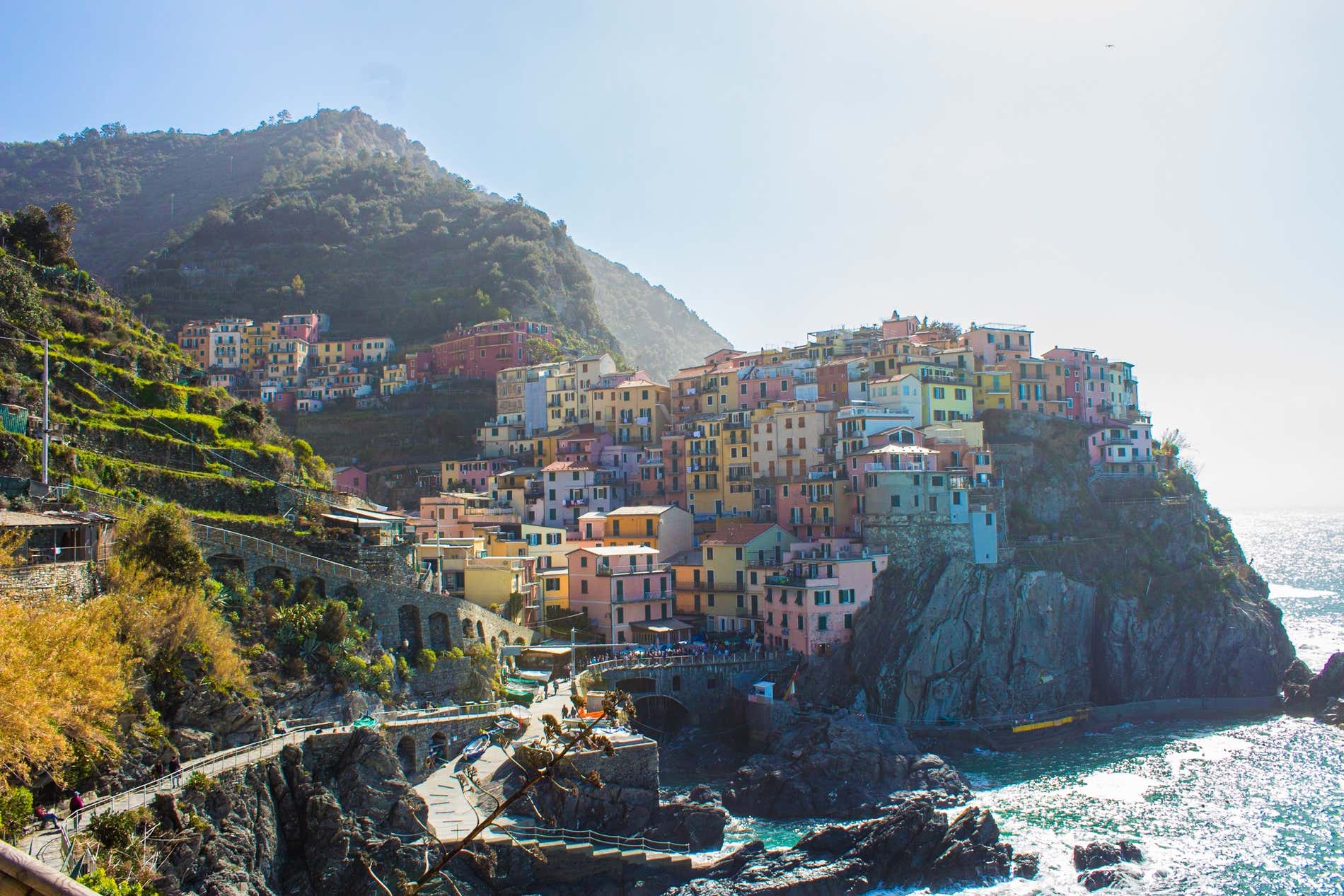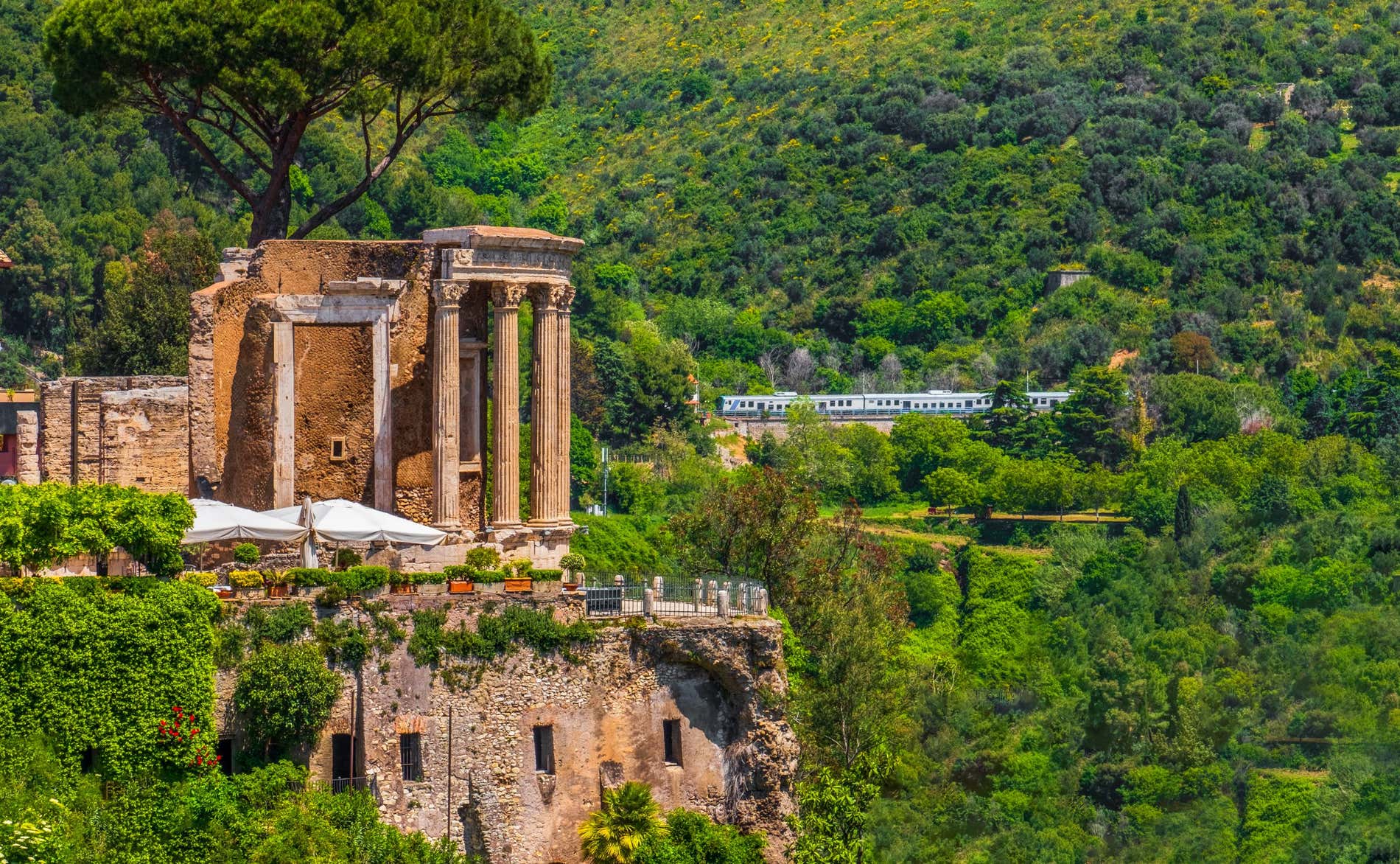Top 20: What to Do in Thailand, the Land of Smiles (2026)
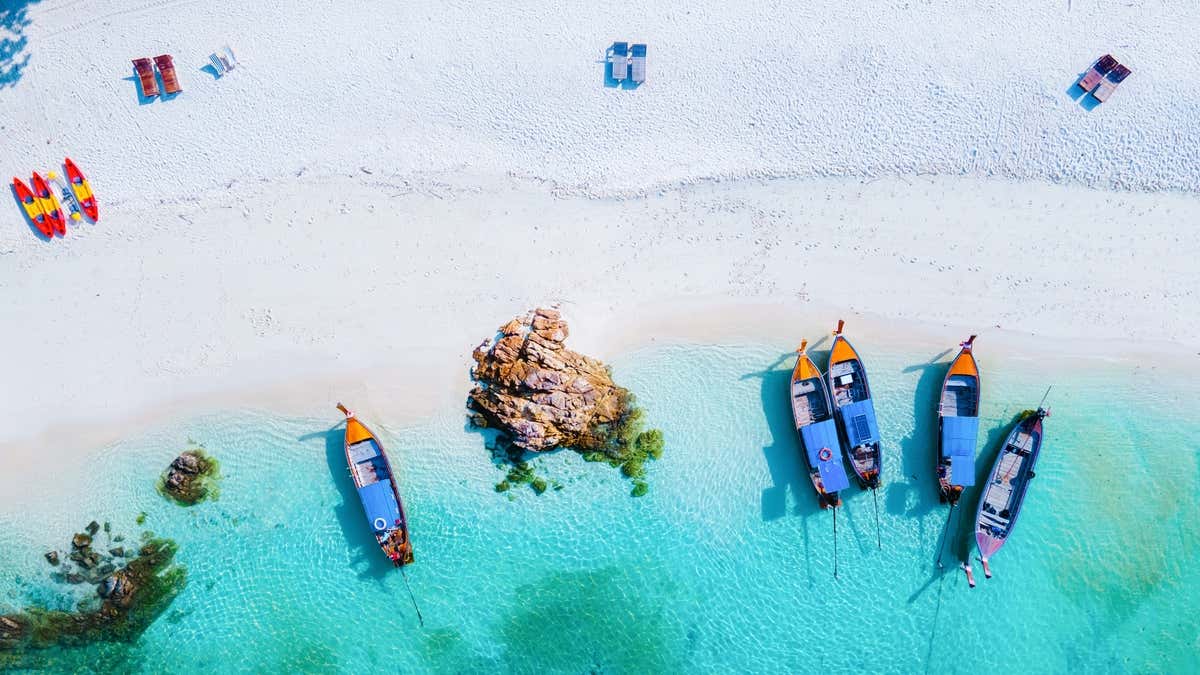
Paradise beaches, ancient temples, lush jungles, and a cuisine that wins you over from the very first bite—Thailand has it all! This Southeast Asian gem has become a dream destination for travelers from all over the world, and it’s easy to see why.
What to Do in Thailand
From the bustling markets of Bangkok and peaceful rice paddies of the north to unique local festivals, here at Civitatis, we’ve put together a list of the 20 best things to do in Thailand. Whether you’re chasing adventure, cultural discovery, or simply want to lose yourself in beautiful landscapes, here are our tips on what to do in the “Land of Smiles.”
1. Discover the Grand Palace in Bangkok
Our list of the best things to do in Thailand begins in the heart of Bangkok with the Grand Palace. Built in 1782, this masterpiece of Thai architecture has been the official residence of the Kings of Thailand for over 150 years. This majestic palace sits on the banks of the Chao Phraya River and stands as a symbol of the power and grandeur of the old Kingdom of Siam.
Here, you’ll find the Wat Arun, which means “Temple of Dawn.” This Buddhist temple’s main feature is its central prang (a tall, intricately carved tower-like spire), encrusted with colorful porcelain and a trident with seven towers. You’ll also see the Wat Pho, also known as the Temple of the Reclining Buddha. Its complex houses the largest collection of Buddha images in Thailand, including a 150 ft (46 m) long massive reclining Buddha!
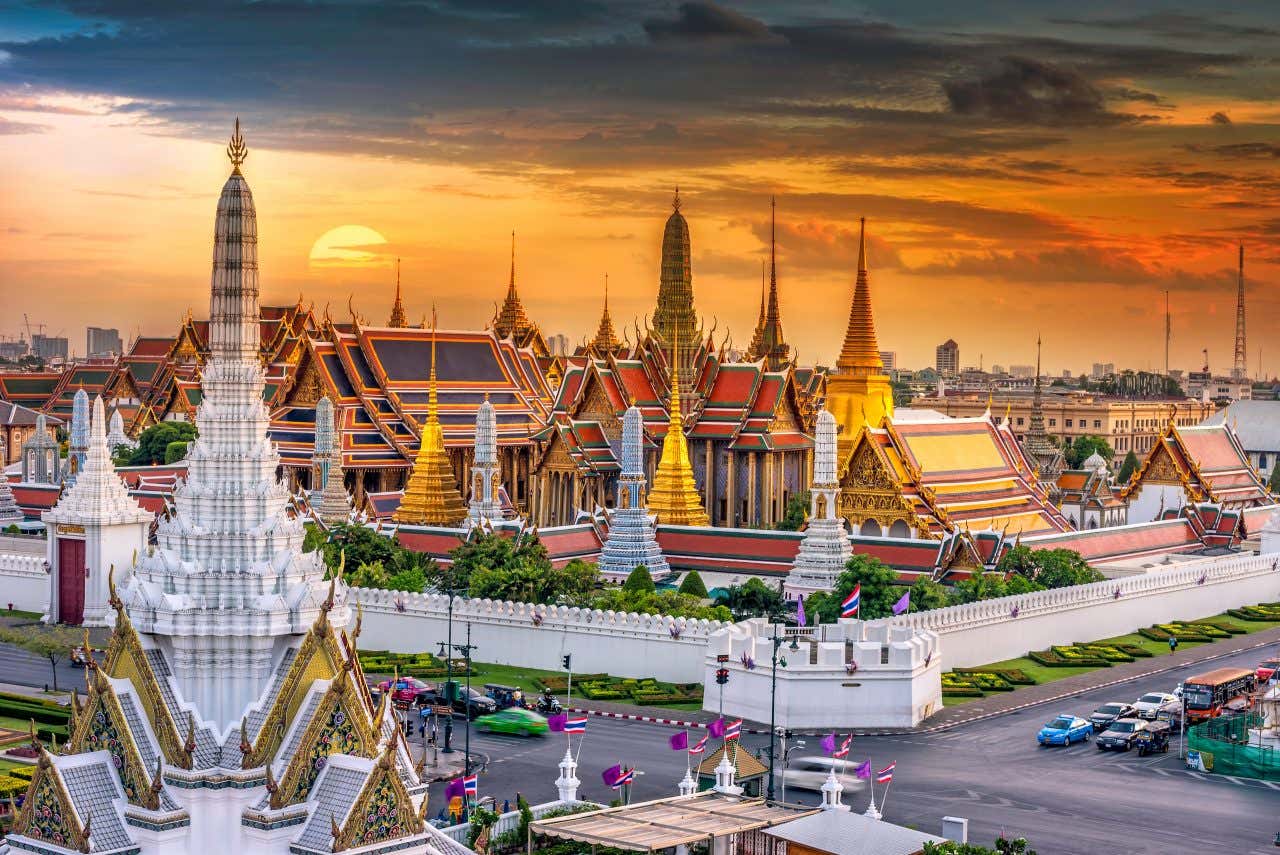
However, the palace’s crown jewel is Wat Phra Kaew, also known as the Temple of the Emerald Buddha. This sacred site houses a small but highly revered jade statue, which is the most sacred image of the Buddha in the country. The temple itself dazzles with colorful glass mosaics, mythical statues, and shimmering golden rooftops.
Visit two of Bangkok’s must-see attractions with this guided tour of the Grand Palace and Wat Phra Kaew! If you want to dive deeper into the city’s wonders and get the best tips, check out our Bangkok guide.
2. Watch an Exciting Muay Thai Fight
Muay Thai is known to be one of Thailand’s most important cultural traditions. More than a sport, it blends martial arts, ritual dance, and spiritual elements to create a fighting style that’s both powerful and deeply symbolic. Catching a fight at one of Bangkok’s iconic stadiums, like the Rajadamnern or Lumpinee, is an unforgettable experience. Watch an exciting Muay Thai fight by booking this ticket to a Muay Thai boxing show.
Pro tip: fights usually take place in the evening, so it’s best to book your tickets in advance. Arrive early to see the pre-fight performances!
If you’re curious to try it for yourself, why not sign up for a Muay Thai class? There are plenty of schools in Bangkok offering sessions for all levels. Whether you’re a complete beginner or have some experience, it’s a special way to connect with Thailand’s national sport.
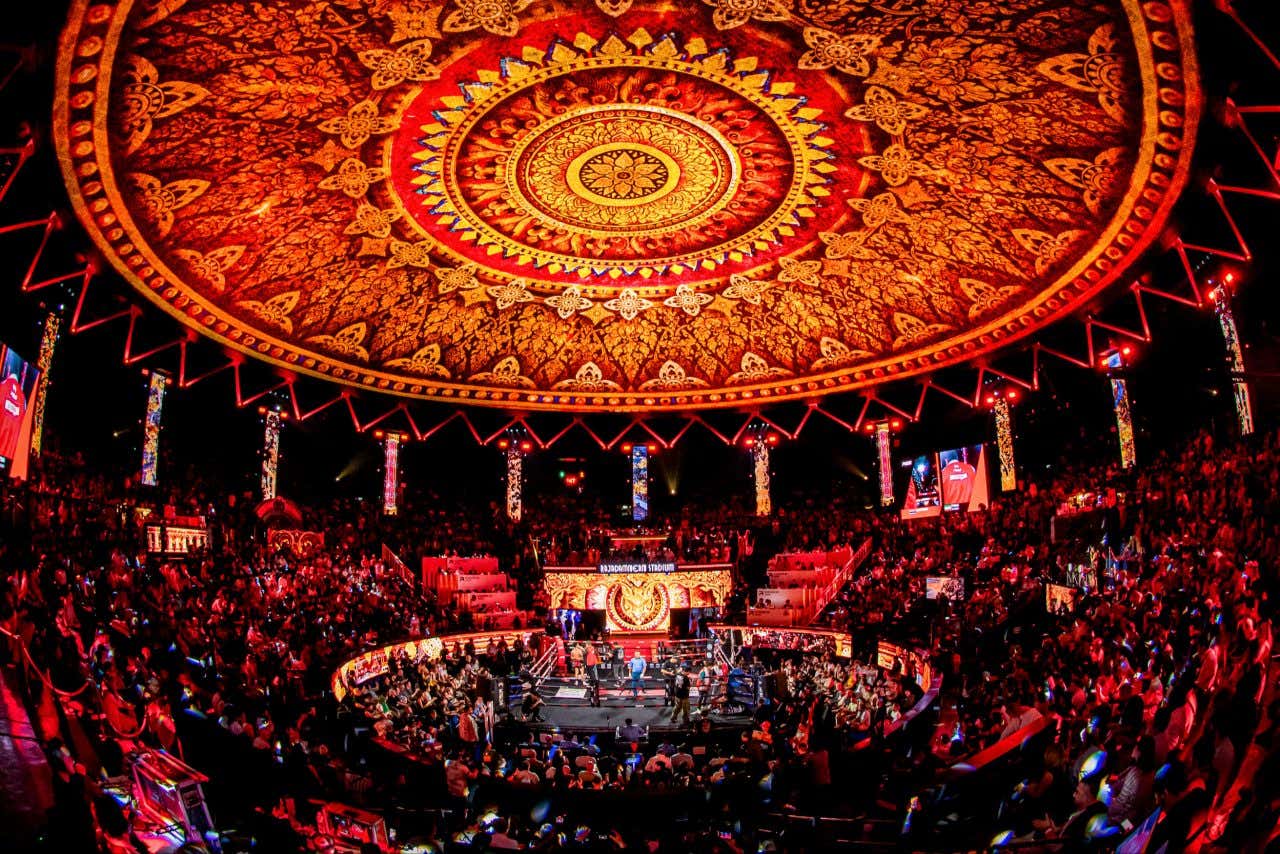
3. Explore the Maeklong Railway Market
Just a 1.5-hour drive from Bangkok lies one of the most unusual markets you’ll ever see. At first glance, Maeklong looks like a typical Thai street market, filled with stalls selling tropical fruit, fresh fish, and colorful vegetables. But several times a day, a train runs right through the middle of it!
As the train approaches, vendors quickly fold up their awnings and pull back their displays, only to set them all back up moments after the train passes. The railway tracks literally become the market aisles, making this one of the most fascinating and entertaining sights in Thailand. With this day trip to the Maeklong Railway Market, you’ll visit this market and the famous Damnoen Saduak Floating Market with a guide.

4. Visit the Amphawa Floating Market
Picture a maze of canals where vendors paddle around in brightly colored wooden boats, selling tropical fruits, sizzling street food, and handmade crafts. Sounds nice, right? The Amphawa Floating Market is one of the most iconic markets in the country, located about 55 mi (90 km) from Bangkok. It offers a more authentic experience, as it’s much less touristy than the Damnoen Saduak Floating Market.
Amphawa is a favorite spot among locals and one of the few floating markets that operate at night, which makes it all the more special. With the lit-up banks, thousands of fireflies twinkling in the trees, and the hustle and bustle of bargaining locals, cruising the canals in a traditional boat is a full-on sensory experience full of charm.
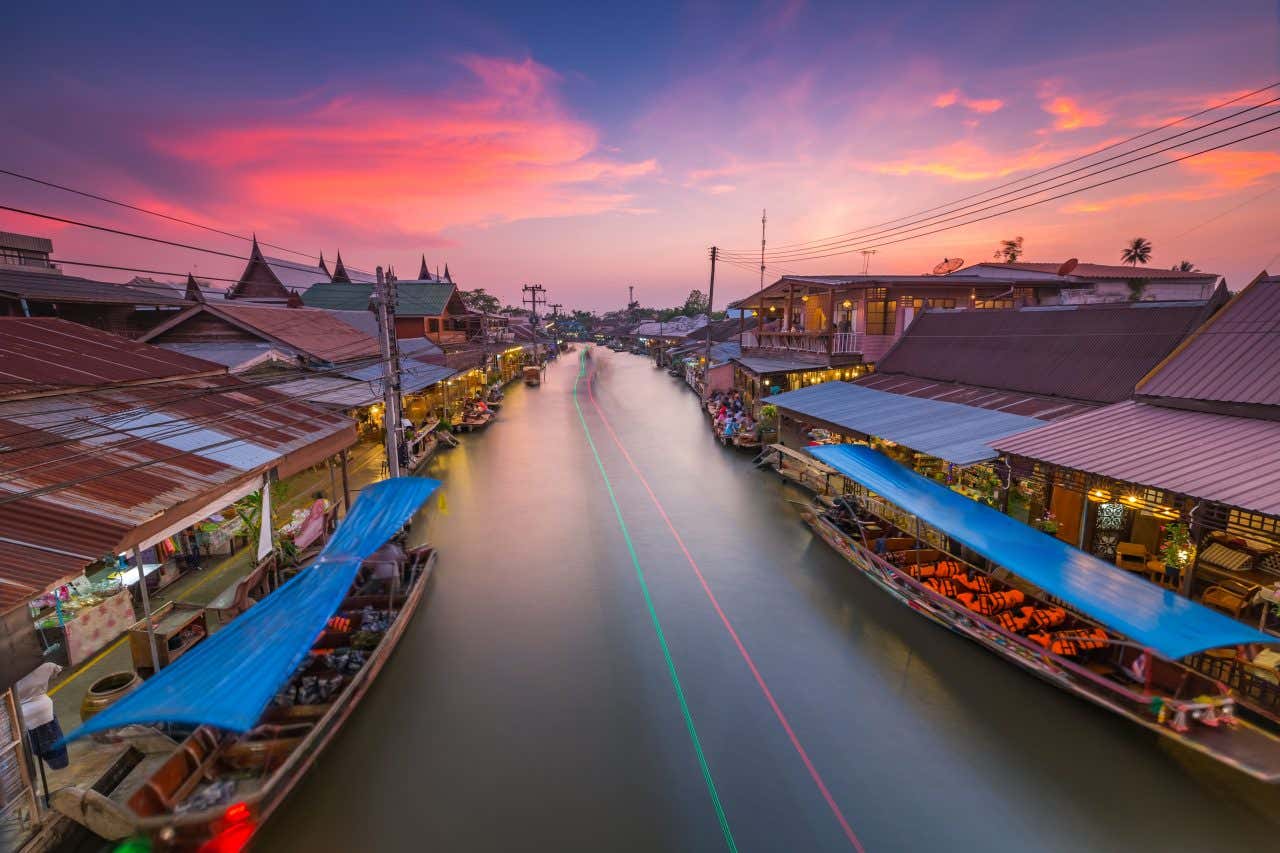
On one of our private tours from Bangkok, you can hop on board a long-tail boat and let yourself drift along the Mae Klong River while learning about the market’s history. If you’re still interested in discovering the Damnoen Saduak Floating Market despite the crowds, check out this day trip. You’ll also have the chance to see the historical Burma Railway, popularly known as the Death Railway.
5. Marvel at the Historic Ruins of Ayutthaya
Heading north from Bangkok, you’ll arrive at the incredible Ayutthaya. Founded in 1350, this city was the capital of the Kingdom of Siam for over 400 years before being destroyed by the Burmese in 1767. It was named a UNESCO World Heritage Site in 1991 and is home to awe-inspiring temples, remains of stupas, and Buddha statues half-hidden in lush vegetation. Did you know it has over 400 temples? One of Ayutthaya’s most iconic images is the Buddha head entwined in the roots of a tree at Wat Mahathat. It’s an almost surreal sight!
Ayutthaya is 1.5 hours by train from Bangkok, but you can also opt for a day trip from Bangkok that includes transport, admission tickets, and an English-speaking guide.
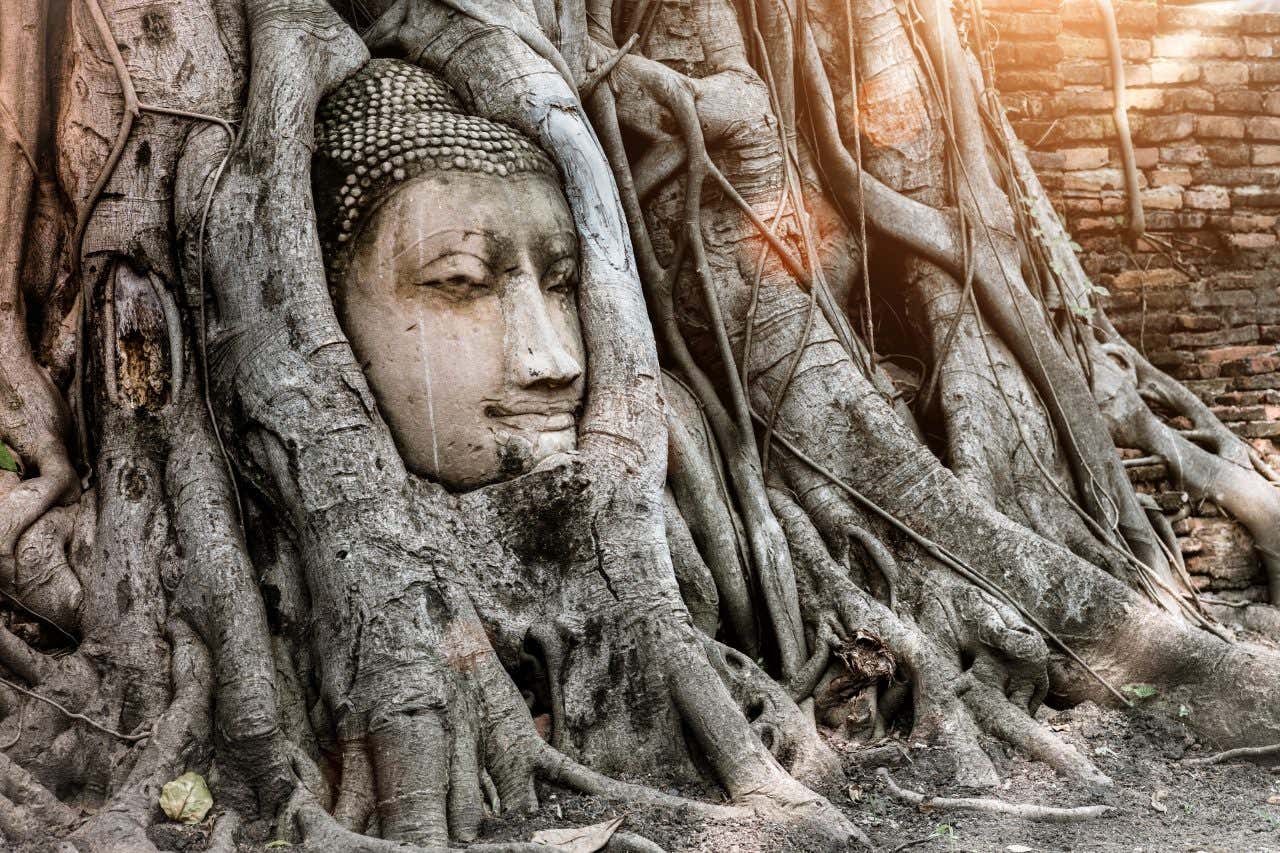
6. Experience the Yi Peng Festival in Chiang Mai
About 434 mi (700 km) from Bangkok lies Chiang Mai, the former capital of the Lanna Kingdom, one of Thailand’s major destinations. Located in northern Thailand, this city is home to a magical festival. Every November, the city lights up during the Yi Peng Festival, when thousands of floating lanterns are released into the sky—a symbolic gesture of letting go of negativity and making wishes for the year ahead. The festival coincides with Loy Krathong, another stunning celebration. During Loy Krathong, decorated rafts made from flowers, candles, and incense float down rivers in honor of the goddess of water and rivers, Goddess Khongkha. Without a doubt, you won’t regret experiencing this beautiful festival!
If you’re looking for temples to discover, in the historic center of Chiang Mai, you’ll come across Wat Chedi Luang. This temple hosts chats every day, where tourists are invited to speak with monks and ask them anything about Buddhism or Thailand. West of Chiang Mai sits the Doi Suthep mountain, standing 5,499 ft (1,676 m) tall, where you can take in the views of the city and its surroundings. On top of the mountain, you’ll find the temple of Wat Phra That Doi Suthep, and on its slopes lies Wat Pha Lat, which originally served as a resting place for pilgrims journeying up to Wat Phra That Doi Suthep.
Whether it’s festival season or not, there’s plenty to do in Chiang Mai. Why not a day trip to the Chiang Mai Elephant Sanctuary? If you’re looking for an adrenaline-pumped adventure, we suggest this zipline activity in Chiang Mai, where you’ll fly over a tropical jungle and take in the breathtaking views.
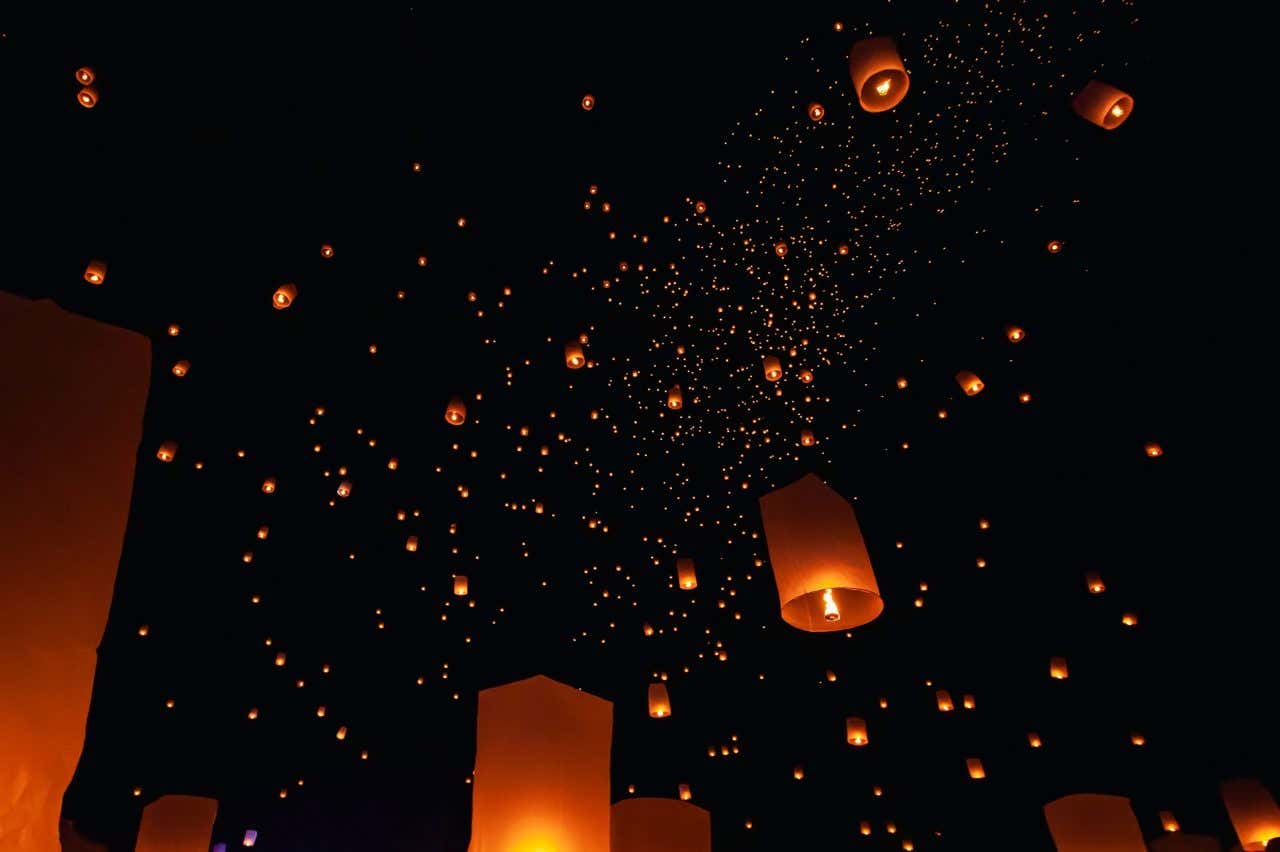
7. Take a Thai Cooking Class
Bold, colorful, and bursting with flavor in every bite, Thai food is a true feast for the senses, and Chiang Mai, the cultural capital of northern Thailand, is a foodie’s paradise. Interested in learning how to make classics like Pad Thai, green curry, or Tom kha kai (Thai coconut soup), and more? If your answer is yes, then take a Thai cooking class in Chiang Mai! You’ll enjoy a hands-on experience with exotic ingredients and master the art of balancing the sweet, sour, spicy, and salty flavors that define Thai cuisine.
After cooking comes the best part—feasting on your creations! It’s a delicious and meaningful way to bring a piece of Thailand home with you. If you’re in the town of Krabi or the charming village of Khao Lak, you can also take part in our cooking classes. Learn how to make traditional recipes in Krabi or discover new flavors in Khao Lak. Your taste buds will thank you!
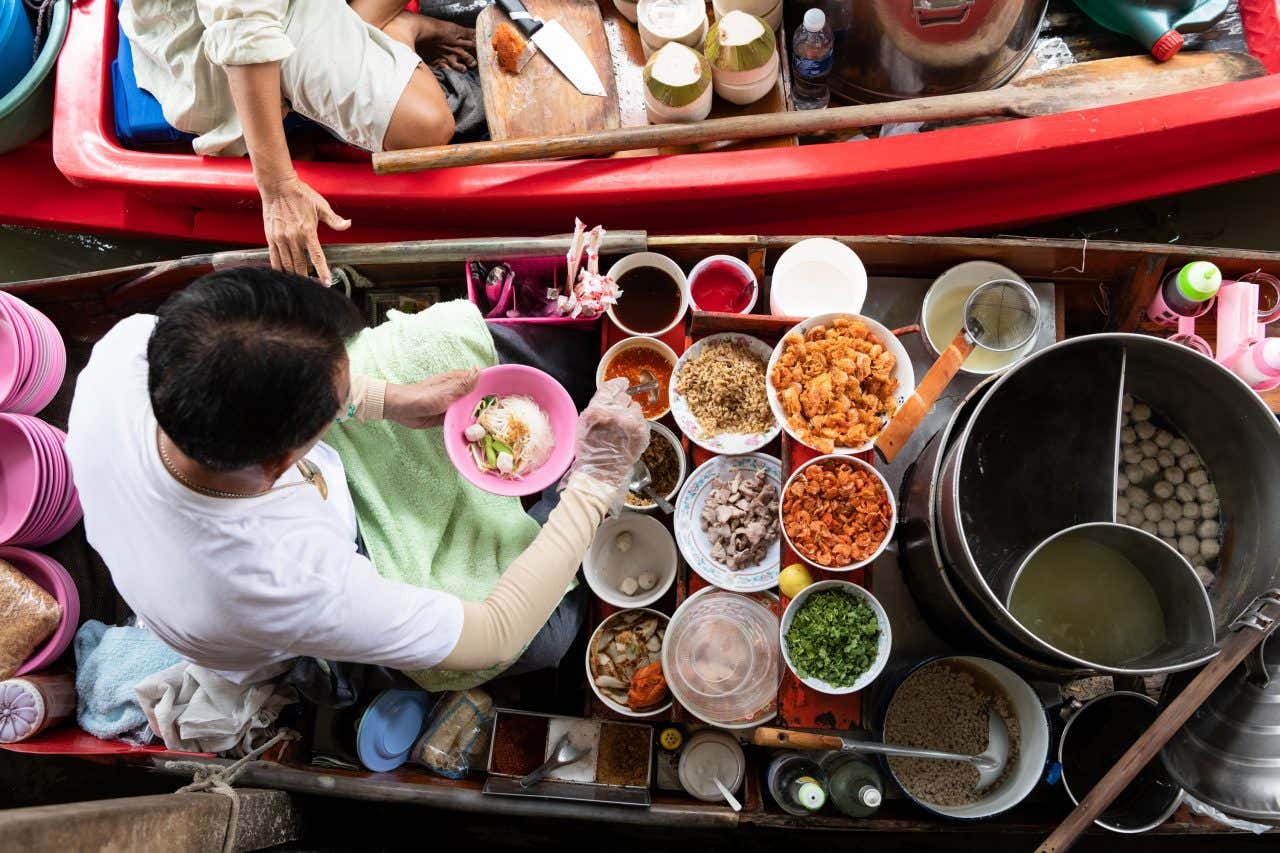
8. Journey to the Rice Fields of Pai
While staying in Chiang Mai, make sure to take a day trip to Pai. Nestled in the northern mountains, this laid-back hippie town is surrounded by waterfalls, hot springs, and rice paddies that stretch as far as the eye can see.
Time seems to stand still here. There are no big hotels or crowds, just bamboo bungalows, cozy cafés, and pure nature. The vibrant green (or golden, depending on the season) rice fields are a major highlight, especially the traditional Kho Ku So Bamboo Bridge that weaves its way through the fields.
One warning: the road to Pai is famous for its 762 curves, so if you’re prone to motion sickness, plan your journey carefully. It’s worth staying overnight to explore the Pai Canyon, Mo Paeng Waterfall, and the towering White Buddha overlooking the valley.
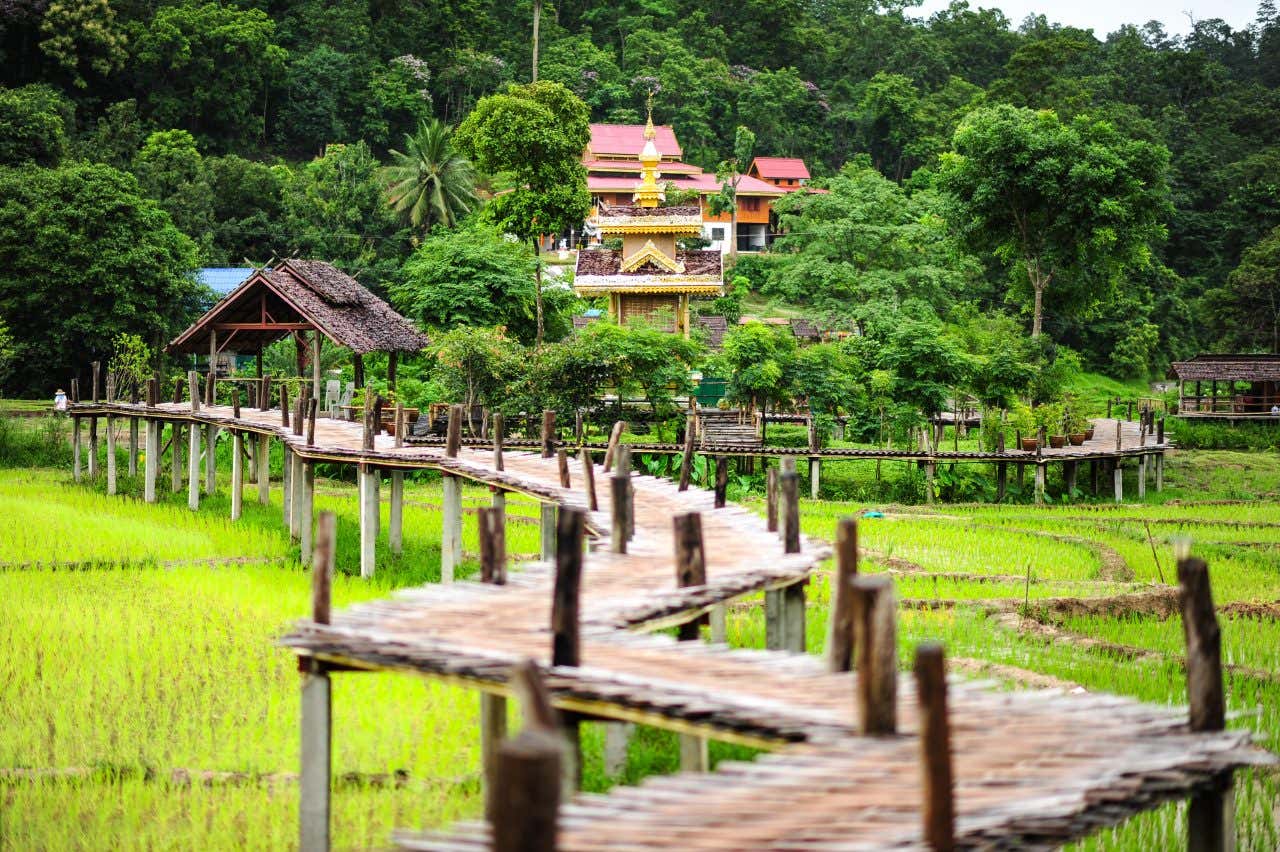
9. See the Tea Plantations of Mae Salong
North of Chiang Rai, in the Thai highlands on Doi Mae Salong mountain, lies Mae Salong, now officially called Santikhiri. This peaceful village is known for its unique history, cherry blossoms, and narrow winding streets lined with noodle shops and tea shops. It’s surrounded by rolling tea plantations and offers a beautiful blend of Thai and Chinese culture.
Settled in the 1950s by Chinese nationalists fleeing the revolution, Mae Salong still has strong influences of Yunnan, with wooden houses, Chinese temples, spice markets, and fragrant oolong tea everywhere. Mandarin is commonly spoken, and the tea is truly world-class. Today, Mae Salong has become one of the country’s top ten destinations among backpackers. You can explore this area on a 2 or 3-day private hike from Chiang Rai, where you’ll visit the tea plantations, board a traditional long-tail boat, and relax in hot springs.
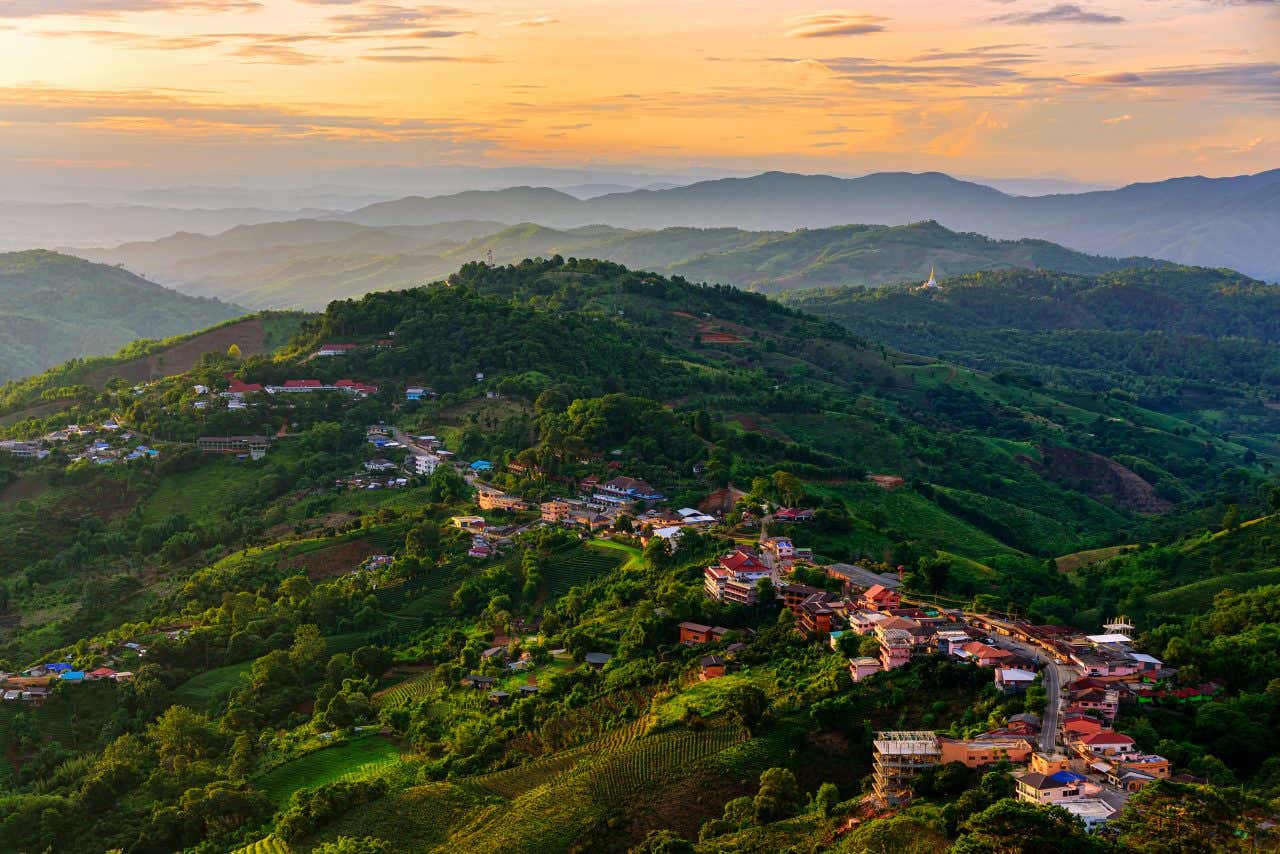
10. Marvel at the White Temple in Chiang Rai
Located in Chiang Rai, Wat Rong Khun, better known as the White Temple, is one of Thailand’s most unique landmarks, which opened to the public in 1997. Designed by Thai artist Charlemchai Kositpipat, this temple is a living artwork that’s still under construction. In fact, it’s not expected to be completed until 2070! The artist considers the temple to be an offering to the Buddha and believes the project will give him immortal life.
Once completed, the temple will have nine buildings, a hall of relics, a meditation hall, an art gallery, and living quarters for monks. For now, this dazzling white temple is divided into: the Bridge of “The Cycle of Rebirth,” which proclaims that the way to happiness is by letting go of temptation, greed, and desire; the Gate of Heaven, guarded by two creatures representing Death and Rahu, who decides the fate of the dead; the Golden Building, representing the body and symbolizing how people focus on desires and money; and the Usobot, the main building and mind of the temple.
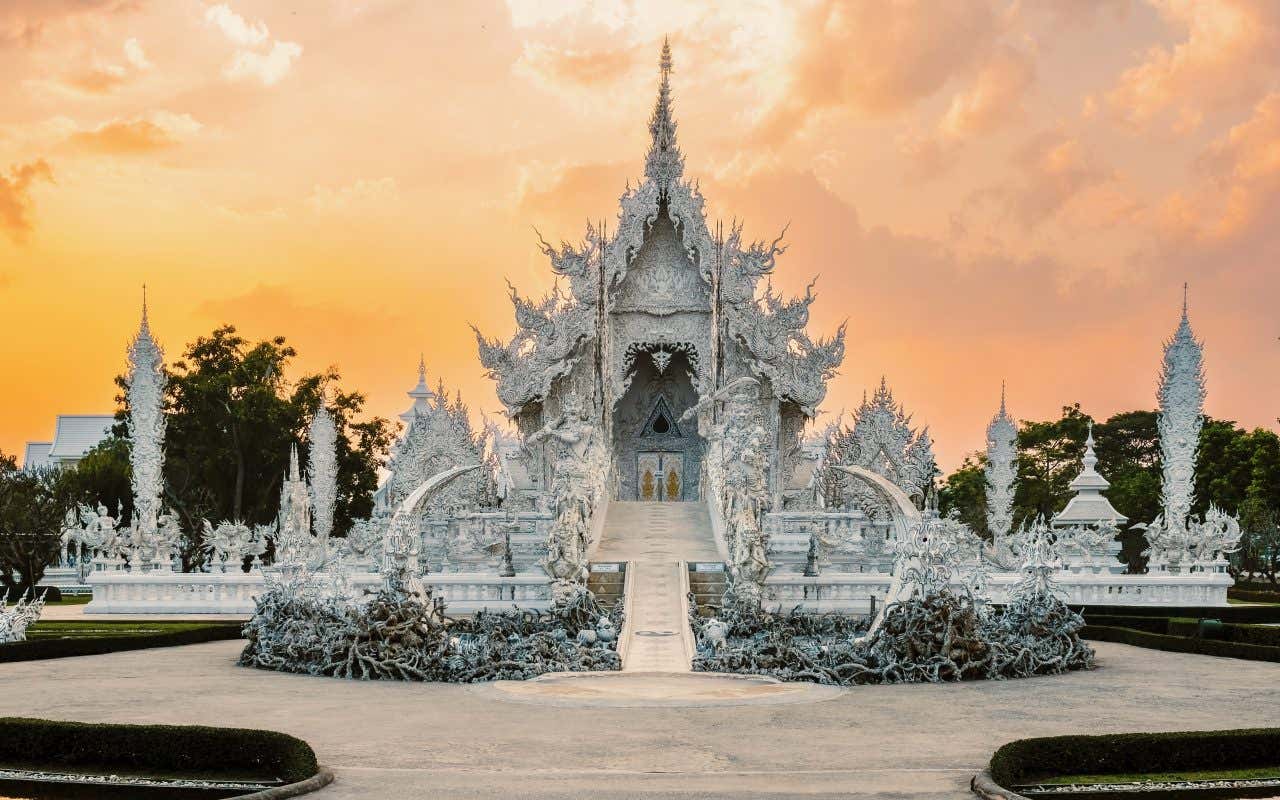
Covered in mirrored glass, the white Usobot building showcases classic Thai architecture with unexpected murals inside. You’ll find Michael Jackson, Freddy Krueger, Superman, Hello Kitty, and more among swirling orange flames and demon faces! The entrance is flanked by hundreds of eerie hands reaching up from the ground, an artistic portrayal of unrestrained desire. With this day trip to Chiang Rai, you’ll have the chance to marvel at this one-of-a-kind monument. If you want a more comprehensive journey through the best of Chiang Rai, check out this private guided tour.
Pro tip: visit early in the morning to avoid the crowds!
11. Travel to the Nan Province
Still relatively untouched by mass tourism, Nan province, northeast of Chiang Mai, has lush mountains, peaceful rice fields, and many national parks. Here, you shouldn’t miss visiting Wat Phumin, known for its striking murals, and learning about local Tai Lue culture at the Nan National Museum, which is housed in a former royal palace. You can also immerse yourself in nature and unwind among the emerald rice paddies of Pua.
Nan is just a 1.5-hour flight from Bangkok. Once there, we recommend renting a scooter to explore places like Bo Kluea, a district in the mountains known for its ancient salt mines that are still in operation today.
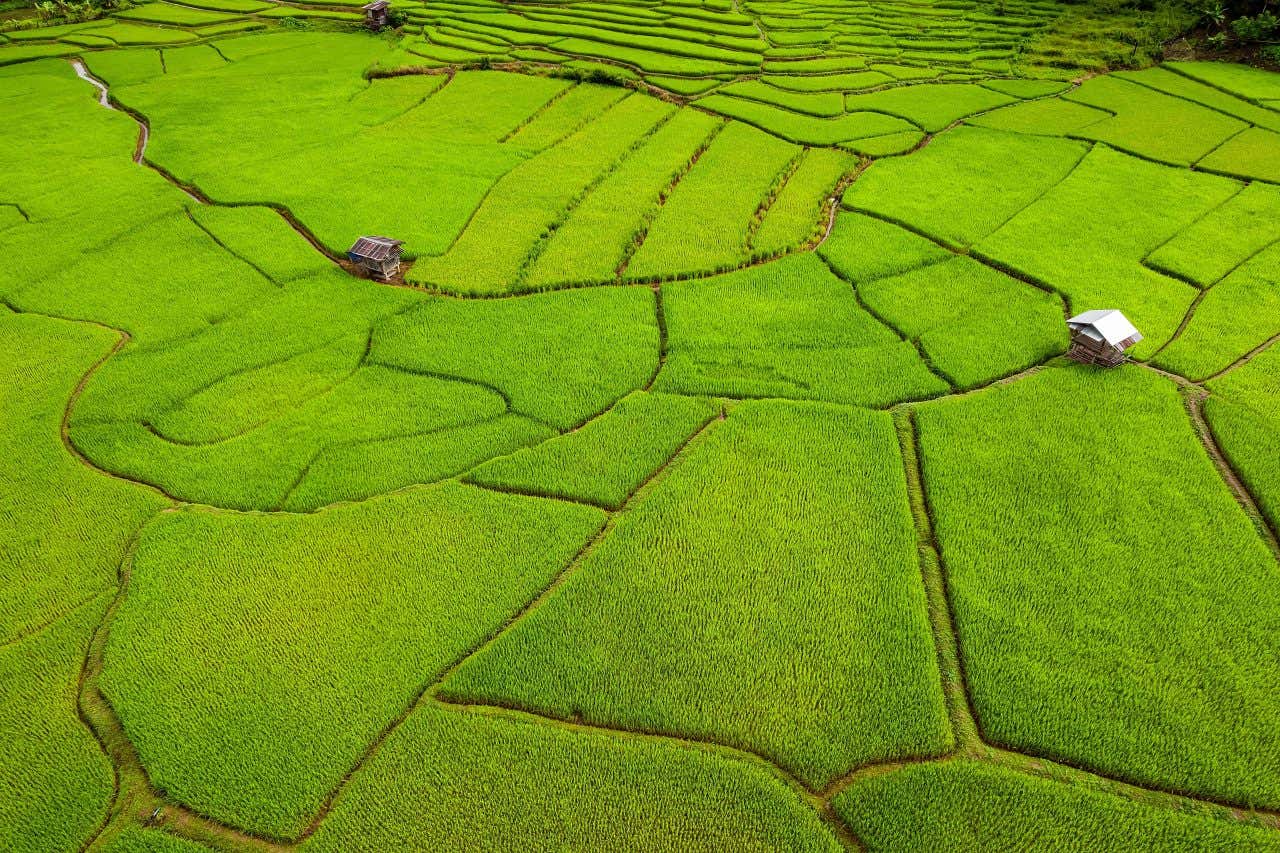
12. Hike Through Phu Hin Rong Kla National Park
Dramatic nature and powerful history come together in the fascinating Phu Hin Rong Kla National Park, south of Nan. This park features bizarre rock formations, a cracked plateau that looks like the moon’s surface, and hidden caves, along with jungle tunnels and an open-air theater. It also has many waterfalls, like the Lan Hin Taek, which is covered with orchids, ferns, mosses, and seasonal flowers. You’ll also find the 32-tiered waterfall of Namtok Man Daeng.
Phu Hin Rong Kla National Park is also home to a wide range of flora and fauna. Here, you can spot Asian black bears, leopard cats, wild boar, and more than 260 species of birds, as well as reptiles and amphibians. One of the best things to do here is to hike to explore the rock formations and waterfalls while taking pictures of the incredible views. It’s perfect for those looking for a challenge, as some trails are quite demanding!
History buffs will find this national park especially interesting. Between 1968 and 1972, the area was witness to many fights between Thai communist insurgents and the Royal Thai Armed Forces. Today, you can walk around the former insurgent base and visit the Thailand-Communism Museum, showcasing weapons, medical tools, and documents from the era.
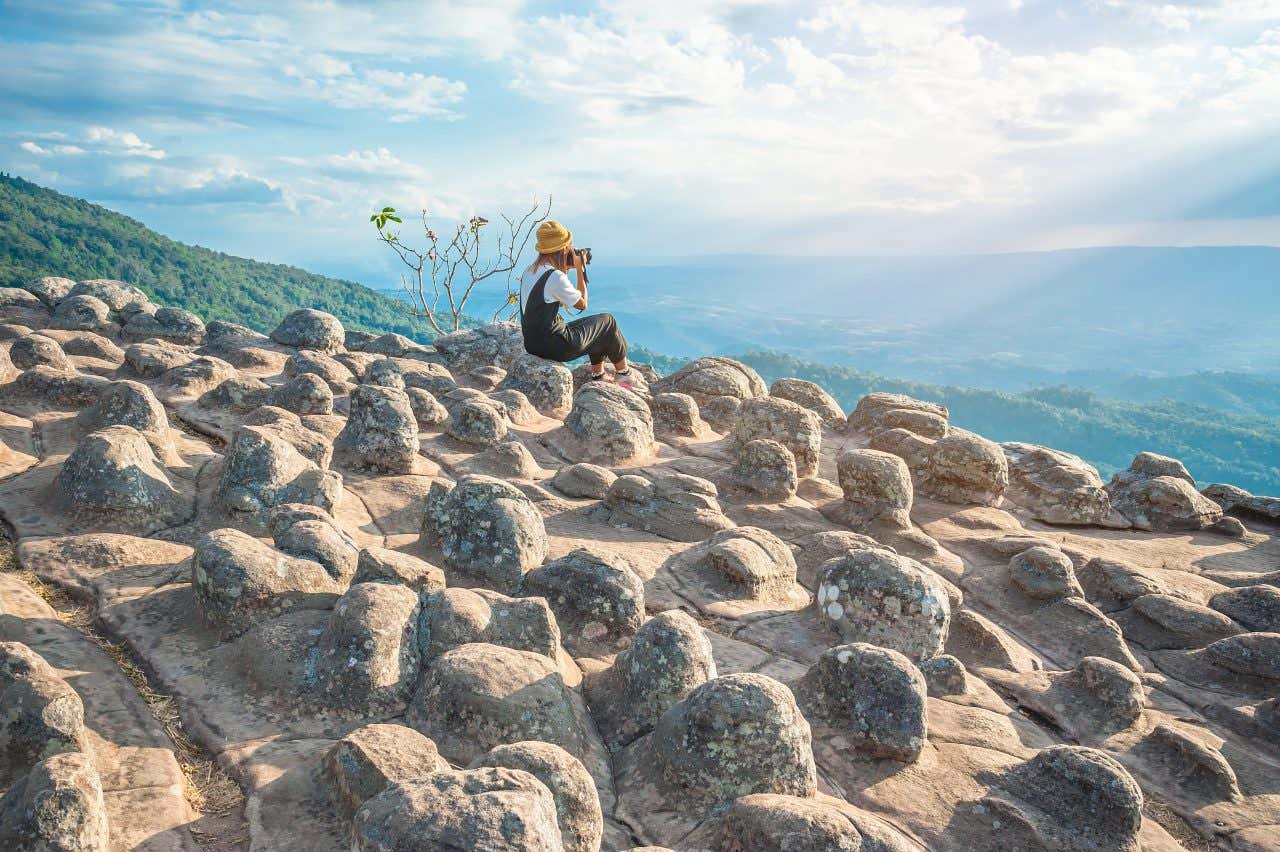
13. Cruise Around the Phi Phi Islands
The Phi Phi Islands, off the coast of Krabi, are arguably the most famous in Thailand—and for good reason! These island groups consist of six islands, with the largest and most populated being Ko Phi Phi Don. However, to really make the most of your time on these islands, it’s best to escape the crowds on Phi Phi Don and take a speedboat tour or go on a 2-day cruise around the archipelago. Make the most of your visit to these islands by swimming in the emerald Pileh Lagoon, snorkeling in the crystal-clear waters of Loh Samah Bay, and exploring Viking Cave on Ko Phi Phi Le!
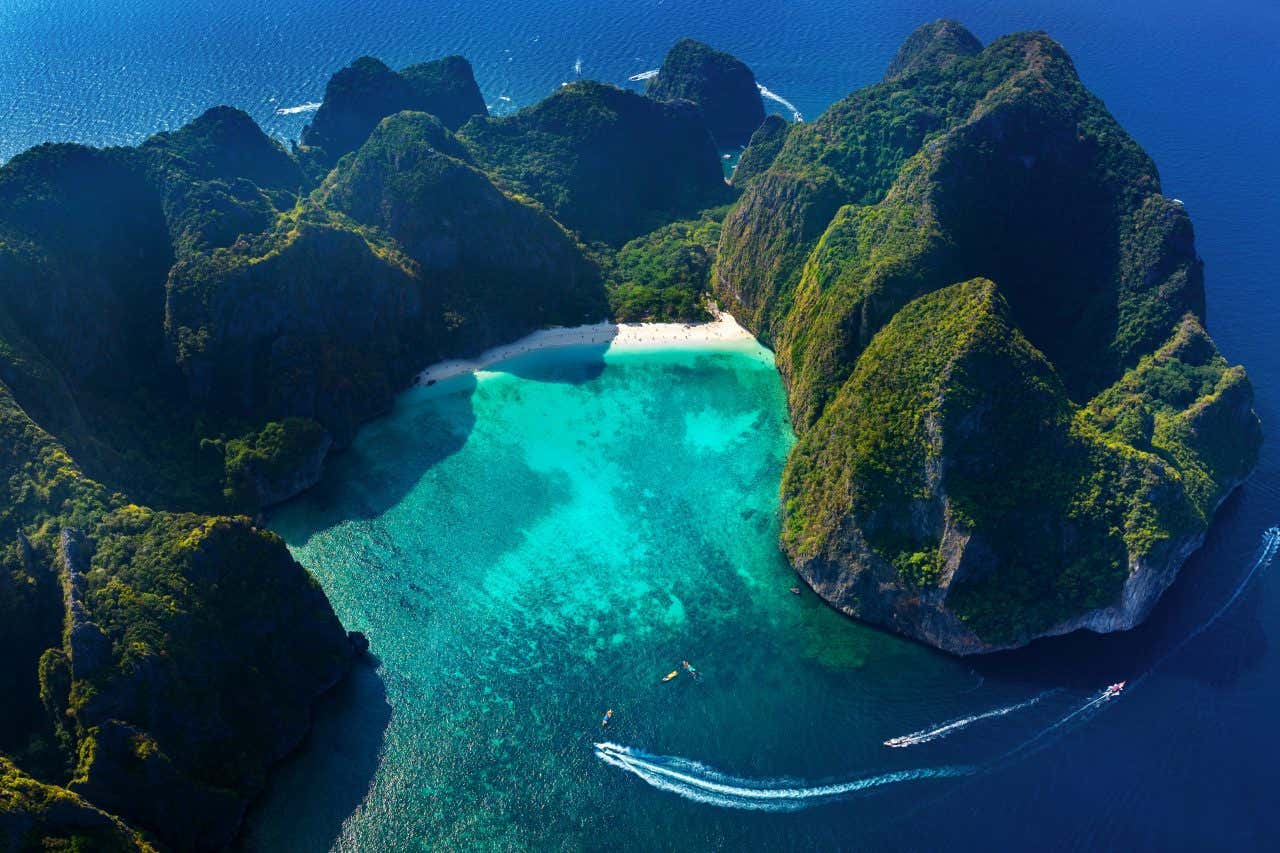
Maya Bay, on the second-largest island, Ko Phi Phi Le, was the filming location of the movie The Beach. This made the bay famous worldwide, but increased tourism and damaged the island’s environment. Due to this, it was closed to the public to recover for some years. Today, access to Ko Phi Phi Le is strictly regulated, swimming is no longer allowed, visitor numbers are limited, and time on the beach is restricted.
Some parts of the archipelago are also off-limits for swimming to protect the coral reefs, as responsible tourism is crucial to enjoy this paradise while preserving the marine ecosystem. One great option to do this is diving in Phi Phi Marine Park, where sustainable practices are encouraged.
14. Stroll Around Sukhothai Historical Park
Before Ayutthaya, there was Sukhothai, the first capital of Thailand in the 13th and 14th centuries. The park, considered quieter and more serene than Ayutthaya, is maintained by Thailand’s Fine Arts Department. With its 193 ruins, this UNESCO-declared World Heritage Site welcomes thousands of visitors each year.
Sukhothai Historical Park’s walls have a gate in the center of each wall. Inside, you’ll find the remains of the royal palace of Noen Prasat (Palace Hill), and 26 temples! Highlights include Wat Mahathat, the largest temple with seated Buddhas and elegant stupas, perfect for a sunrise stroll, and Wat Si Chum, famous for its enormous 49 ft tall (15 m) Buddha whose golden hand is one of the most photographed spots in Sukhothai.
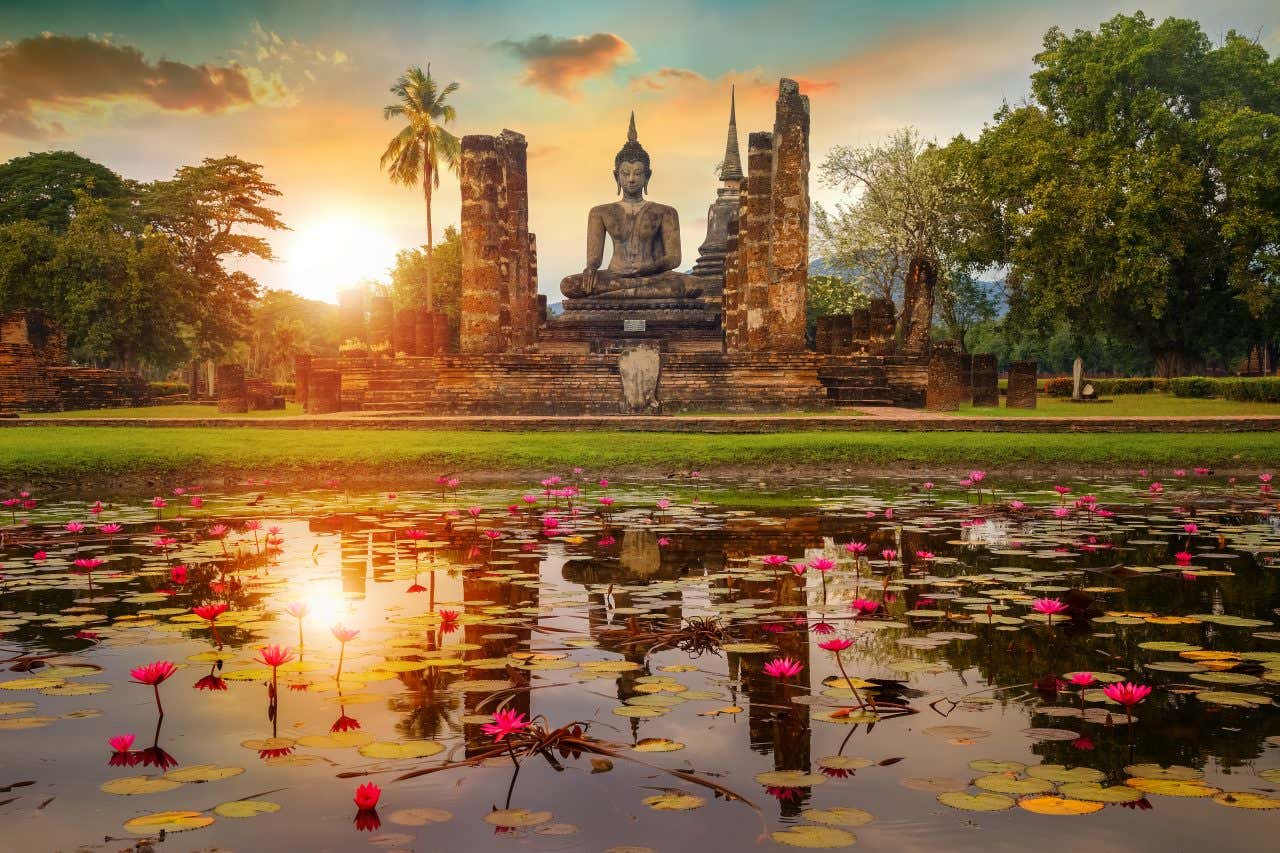
15. Step Inside a Magical Cave in Phetchaburi
Just 2 hours from Bangkok by train, and easily explored in one day (even easier if you rent a scooter!), Phetchaburi is a hidden gem where the Phetchaburi River flows through the middle of the town. Here, we recommend hopping on the cable car to the top of the only hill in the town, Khao Wang, to take in the sweeping views.
You’ll find the Phra Nakhon Khiri royal palace at the top of Khao Wang, a truly fascinating palace with Thai, Chinese, and European influences. In Phetchaburi, it’s an absolute must to visit the Tham Khao Luang Cave, a naturally lit underground temple that’s both magical and peaceful.
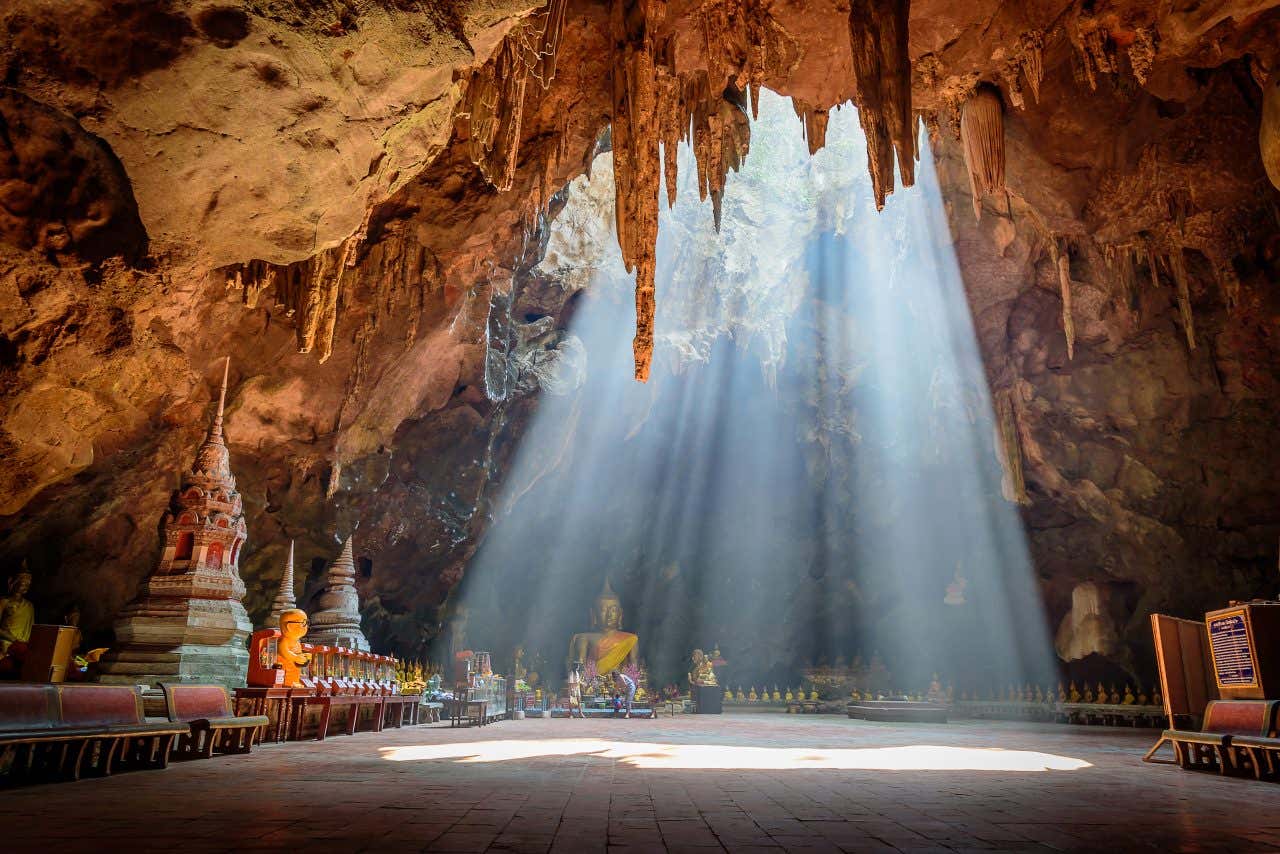
Calling all foodies with a sweet tooth! The province is also known for its traditional Thai desserts, with the most well-known being a custard dessert called khanom mor gaeng. In fact, in 2021, it was recognized by UNESCO as a creative city of gastronomy! Not only is Phetchaburi an important place for its desserts, but there’s also an annual festival that takes place here in early February and lasts 8 days. Ready to see the province’s sound and light show and admire classical Thai dance?
16. Dive into Nature at the Khao Sok National Park
Khao Sok National Park, located in southern Thailand, is one of the country’s most stunning natural treasures. It’s home to one of the world’s oldest rainforests and the vast Cheow Lan Lake, surrounded by dramatic limestone cliffs. Here, you can also enjoy plenty of activities, like jungle safaris, kayaking, and boat trips to remote corners of the lake.
Sleeping in a floating wooden bungalow on the lake is a unique experience, where you’ll wake up to the sounds of the gibbons and mist rising over the water, surrounded by spectacular karstic cliffs. You’ll feel like you’re on a movie set!
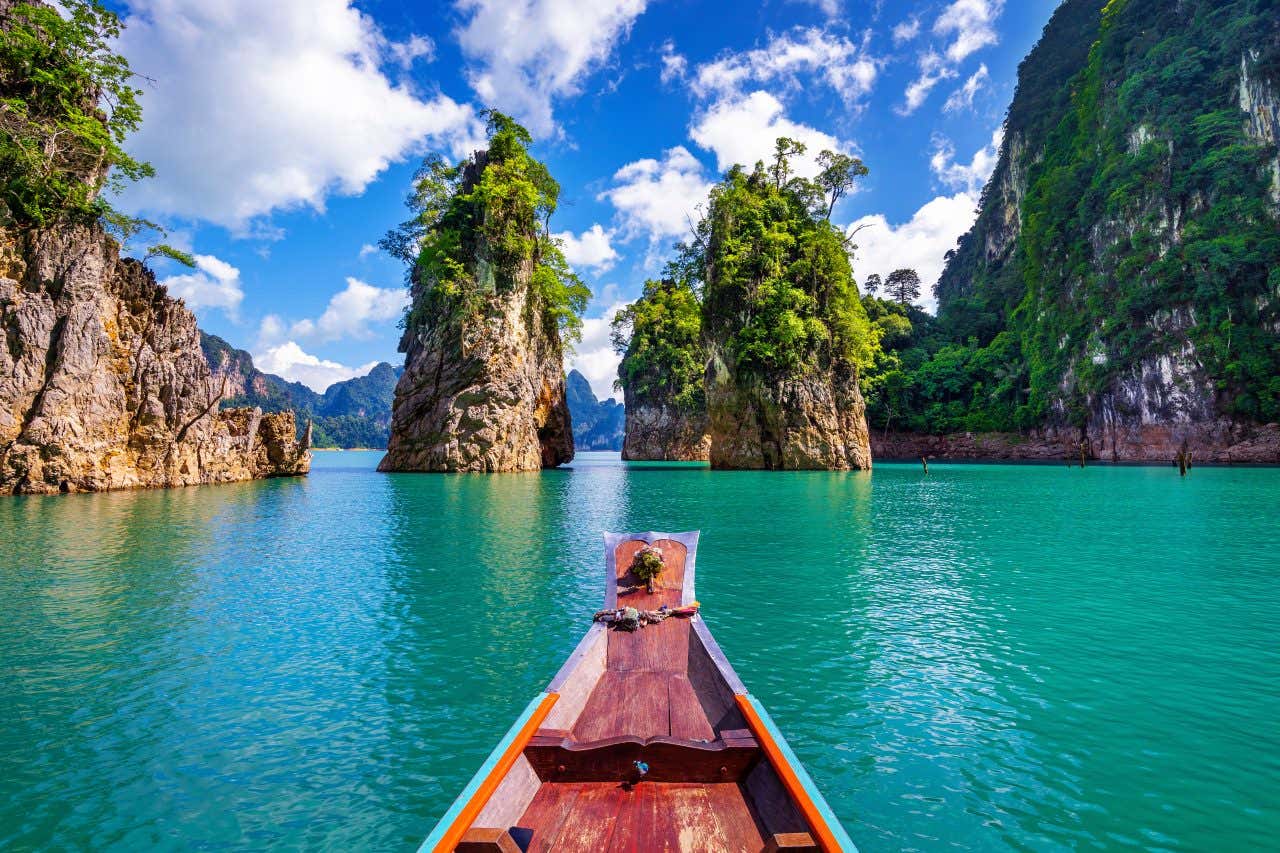
The park boasts an incredible flora and fauna, including elephants, hornbills, wild oxen, deer, wild boars, monkeys, and even the rafflesia, the world’s largest flower. On this safari in Khao Sok National Park, you’ll meet and feed friendly elephants and glide down the river on a bamboo raft. You can also take in the park’s stunning natural beauty on this day trip to Cheow Lan Lake, which includes a buffet lunch at a floating restaurant.
17. Scuba Dive in the Island of Koh Tao
Adventure-seekers, this one’s for you! The island of Koh Tao is a popular destination for scuba diving and snorkeling in the Gulf of Thailand. Did you know it has over 25 dive sites to explore? Not only that, but the island is also a great place for hiking, rock climbing, and bouldering.
With crystal-clear water, vibrant coral reefs, and calm seas, this island is often ranked among the top diving spots in the world. You might spot clownfish, rays, turtles, and harmless blacktip reef sharks! Here are some activities we recommend while visiting Koh Tao:
- Koh Tao Snorkeling Tour
- Sunset Paddle Boarding
- Introduction to Scuba Diving
- Koh Tao Scuba Diving Experience
- Koh Tao Night Diving
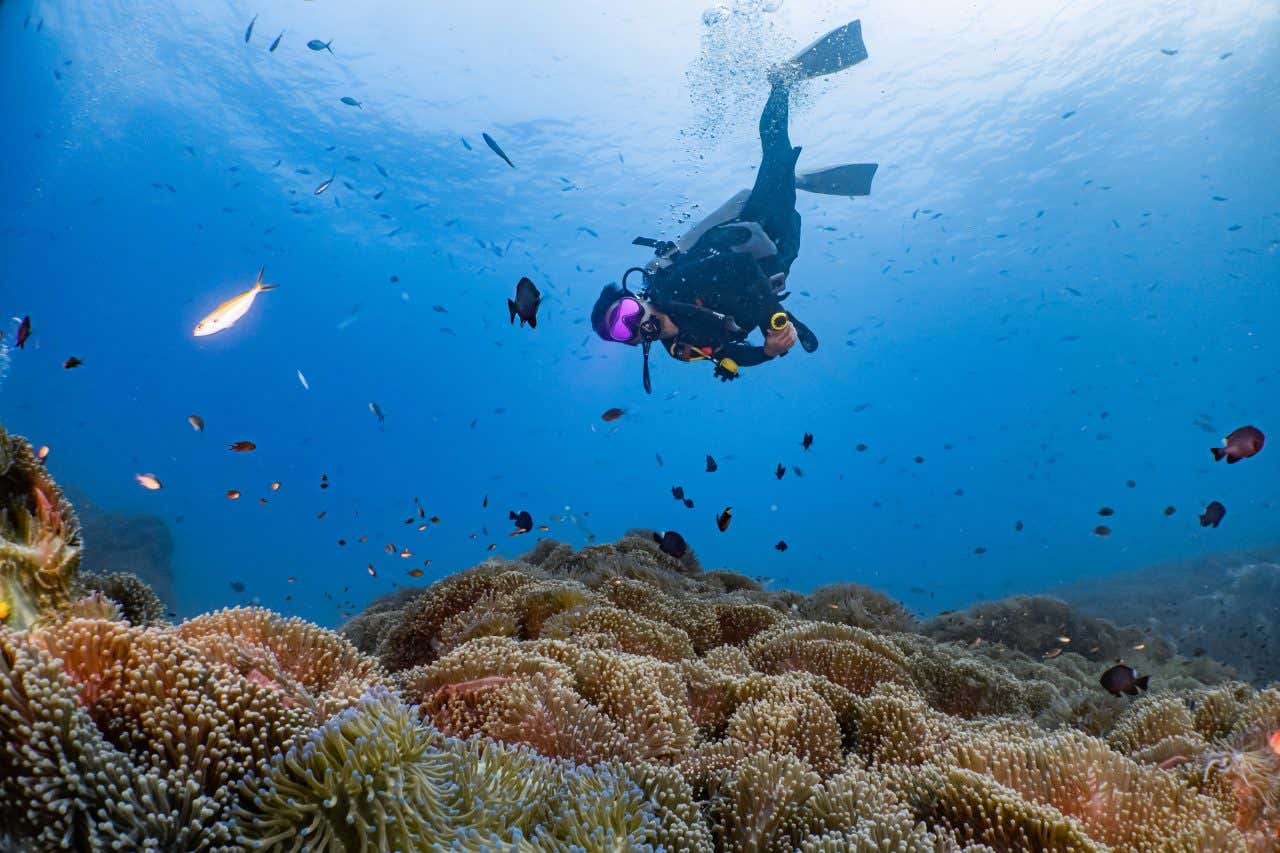
18. Escape to James Bond Island
The tall, limestone karst towers of the popular Khao Phing Kan and Ko Ta Pu are a must-visit. These islands were featured in the James Bond movie The Man with the Golden Gun, which has given them the name of James Bond Island. Live your own spy adventure with this cruise to James Bond Island! Or, enjoy this day trip to Phang Nga, where you’ll not only see 007’s iconic island but also get the chance to kayak through the surrounding waters.
If you’re looking to completely unwind, you can head to the island of Koh Yao Noi, located near James Bond Island, where life moves at a slower pace. Think kayaking among the islets, seaside yoga sessions, and bike rides through rice fields. This island is located in Phang Nga Bay, far from tourist crowds. There are no full moon parties here and no masses of visitors. Instead, you’ll find peaceful beaches, local fishermen heading out at dawn, and breathtaking views of the bay’s iconic karst formations. Perfect for total relaxation!
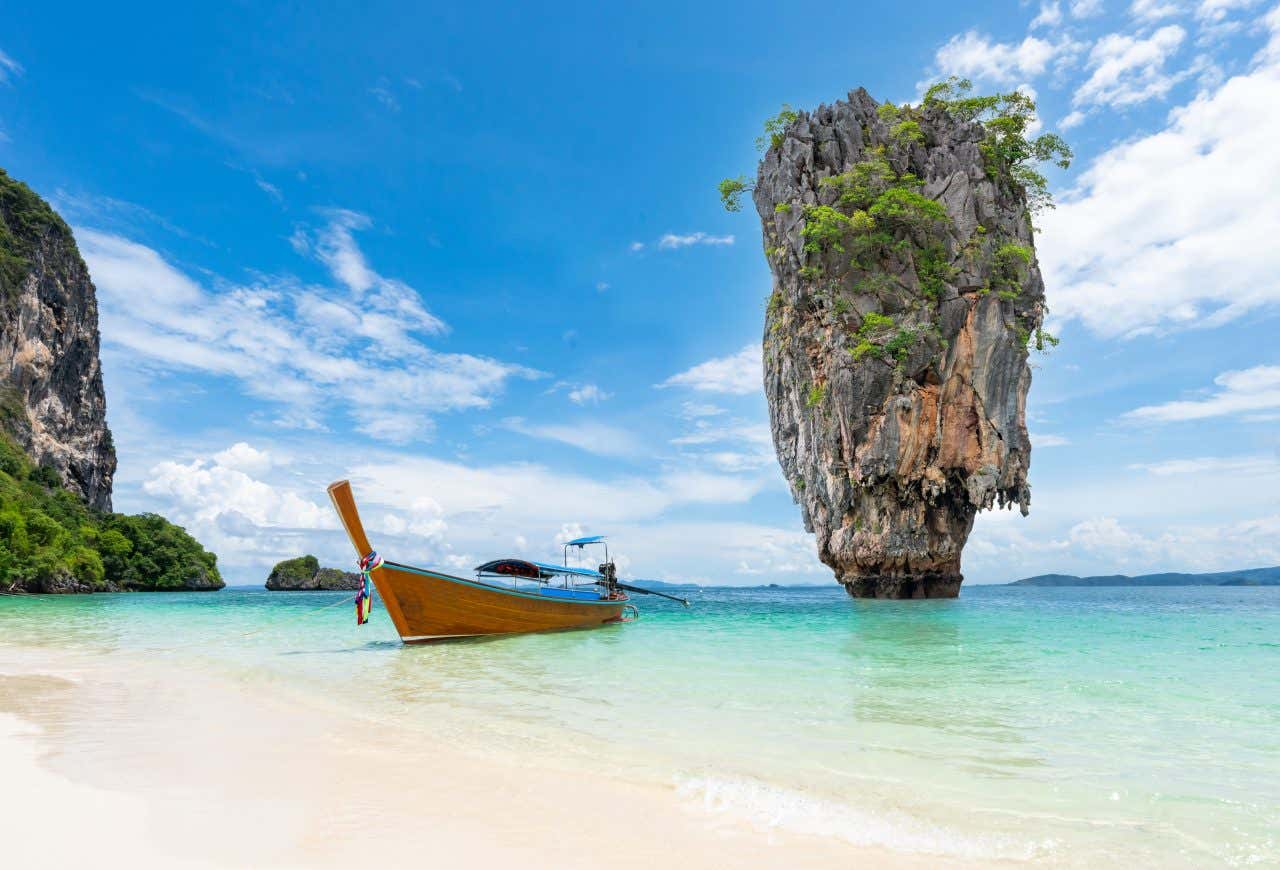
19. Enjoy the Nightlife Scene of Phuket
Phuket, one of the oldest cities in the country, is located near the Phi Phi Islands and James Bond Island. This city is known for being a yoga retreat and its stunning beaches, such as Kata, Karon, and Patong, the center of Phuket’s nightlife and shopping. Here, you can visit Phuket’s historical Old Town, a quarter filled with colorful Sino-Portuguese buildings, charming cafés, street art, and a lively weekend night market.
From fresh seafood beachside to street food stalls and fine dining, Phuket is a favorite spot for foodies. Don’t miss local dishes like moo hong (Thai pork belly stew) and delicious mango sticky rice. Speaking of food, on this private tour of Phuket, you’ll have the chance to indulge in a traditional Thai lunch and explore the city with an exclusive guide just for you. Plus, you’ll enter the temple of Wat Chalong, the largest Buddhist complex on the island.
Looking for a fun night out while in Thailand? You’ve come to the right place—Phuket also has a buzzing nightlife! Visit Bangla Road, an iconic street lined with neon lights, live music, and an electrifying atmosphere. You’ll find street food vendors, themed clubs, open-air bars, and everything from traditional Thai dance performances and acrobats to breakdancers and magicians. It’s a fantastic place to make some unforgettable memories!
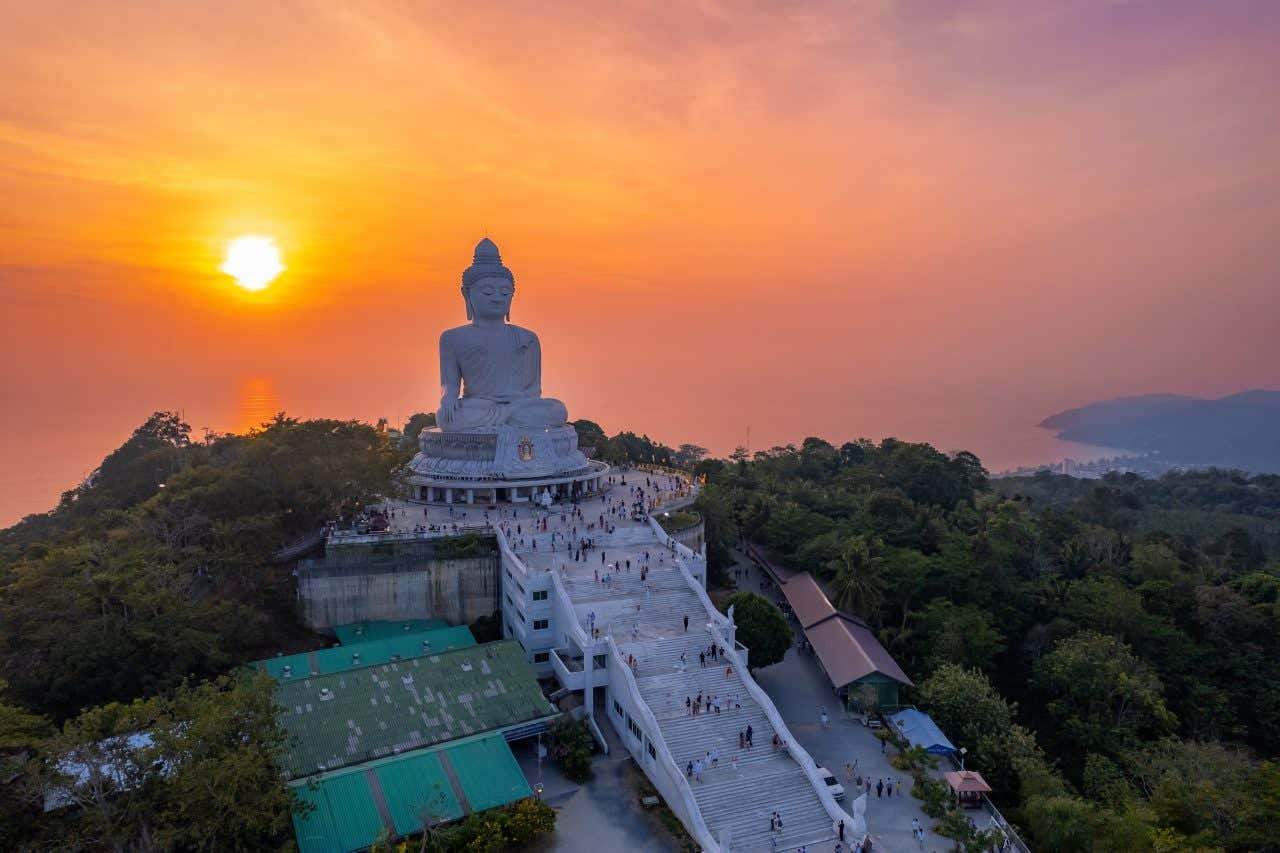
20. Unwind at the Peninsula of Railay
Located between the town of Krabi and Ao Nang, the small peninsula of Railay is a paradise of pristine beaches, lavish jungle, and a quiet, relaxing atmosphere. It’s only accessible by boat, as it’s surrounded by dramatic limestone cliffs. One hidden gem you shouldn’t miss here is the Phra Nang Cave or Princess Cave, on the east side of Railay, famous for its stalactites and stalagmites. According to legend, fishermen in the past would bring offerings to the cave, home to a mythical sea princess. They believed this would bring them success in their fishing, protect them from danger, and help with fertility.
Thanks to its limestone cliffs, Railay is one of the top rock climbing destinations in Thailand, attracting rock climbers from all over the world. But you don’t need to be a climber to enjoy it! With this Krabi Islands tour or this day trip to Krabi and Railay, you’ll explore the best beaches on a speedboat and go snorkeling at night among fluorescent plankton under moonlight. What more could you ask for?
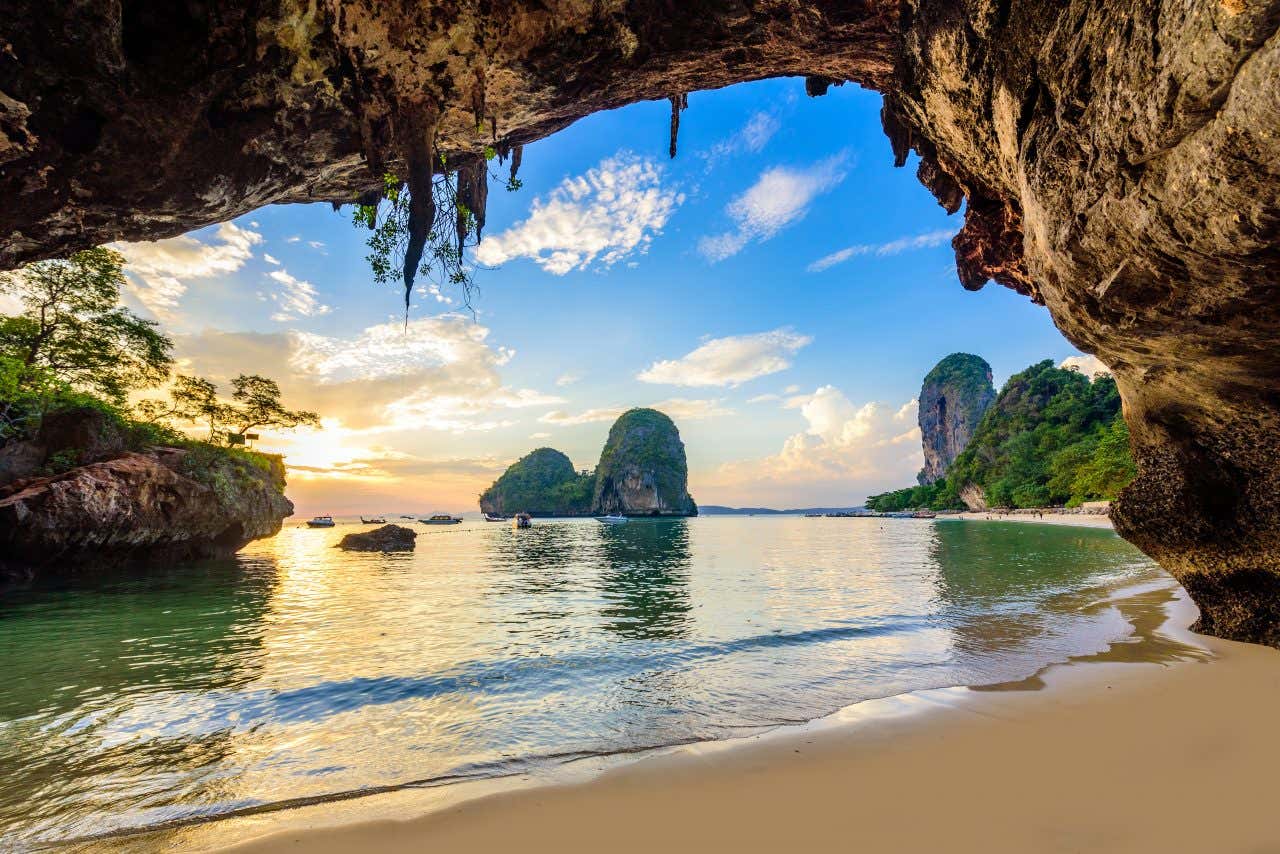
When to Travel to Thailand?
The best time to visit Thailand is from November to March, during the dry season. The weather is pleasant, the skies are clear, and it’s the perfect time to enjoy the beaches, explore temples, or go hiking in the north of the country. Keep in mind that this is also the high tourist season, especially in December and January.
If you want to avoid the crowds while still basking in the sun, November or Early March are ideal. From May to October is the rainy season, so you can expect frequent, but brief showers, and lush landscapes. This can be a great option if you prefer to explore Thailand with fewer tourists and cheaper prices!
Do I Need a Visa to Travel to Thailand?
American, British, and Irish citizens don’t need a visa for tourist stays of up to 60 days. All you need is a passport valid for at least 6 months from the date you’re entering the country. If you’re planning to stay longer or traveling for another reason (such as work or study), you’ll need a visa.
It’s also possible to request a 30-day extension once you’re in the country at a local immigration office. For stays longer than 2 months, make sure to apply for a tourist visa in advance at the Thai embassy.
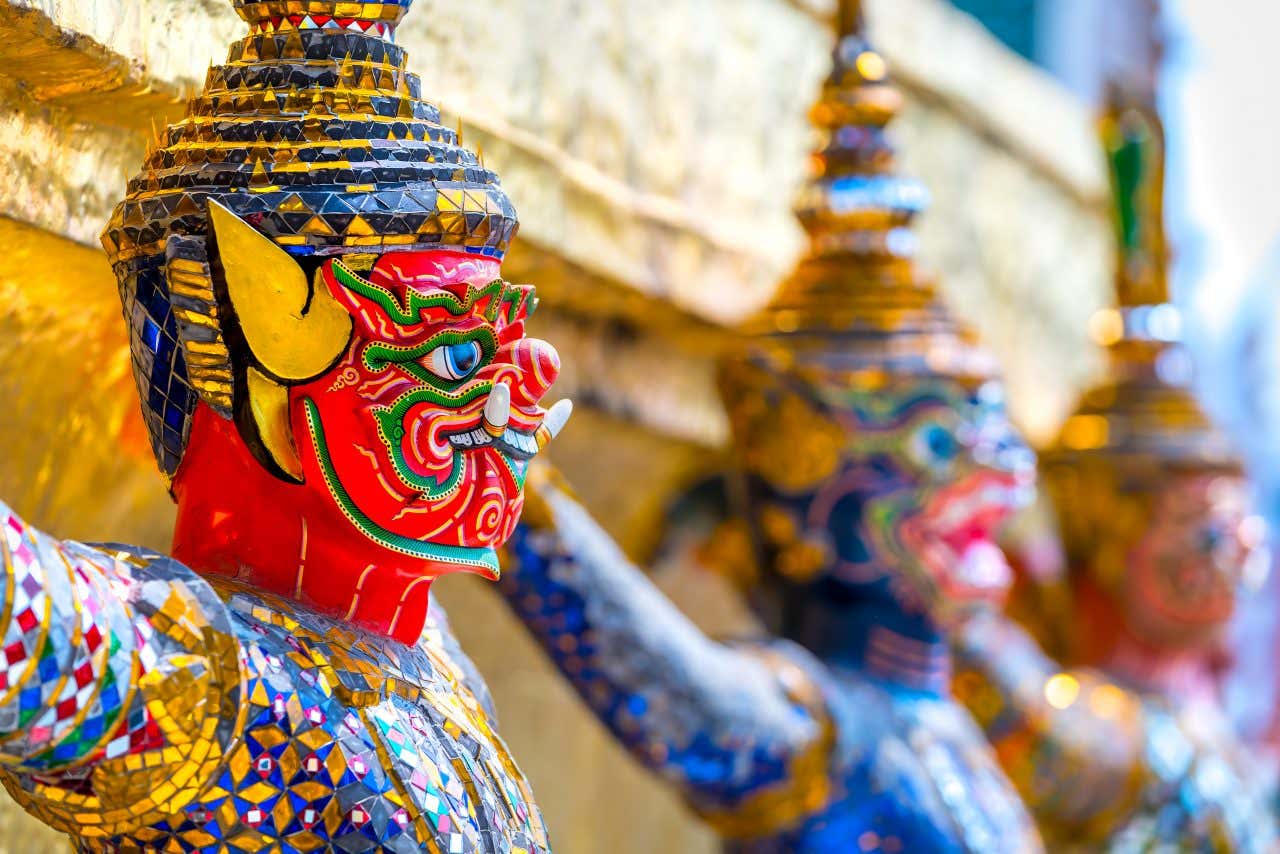
From beautiful temples and jungle adventures to dreamy islands and unforgettable flavors, Thailand offers unforgettable experiences that stay with you long after the trip ends. With a mix of must-see destinations and lesser-known treasures, we hope this blog has provided practical tips and some inspiration for your Thai adventure. For even more ideas on what to do in this incredible country, take a look at all the activities offered by Civitatis in Thailand. There’s something for everyone! What are you waiting for? Start planning your trip, pack your bags, and let Thailand surprise you at every turn.





